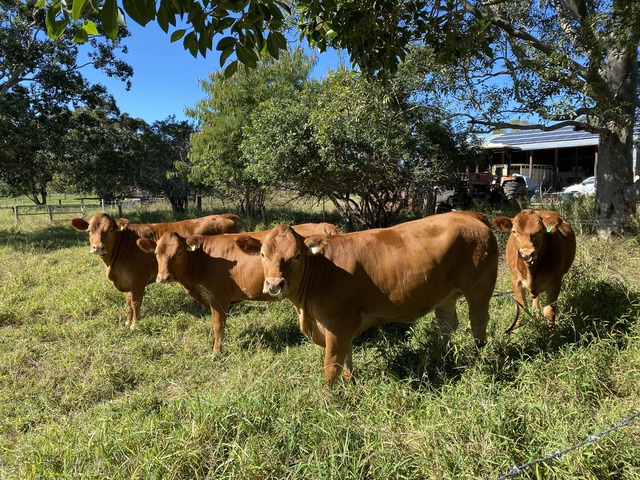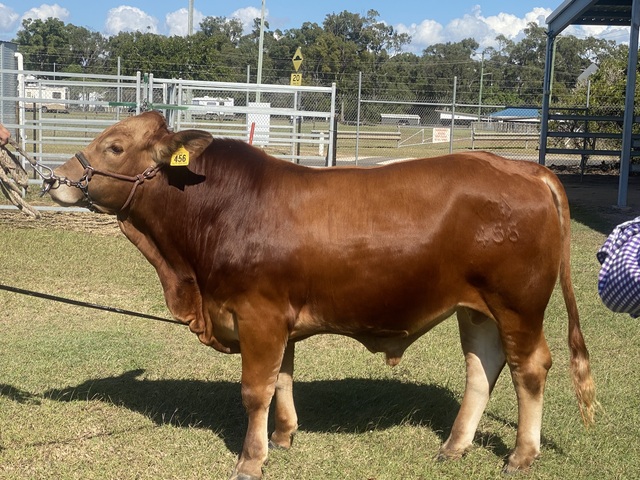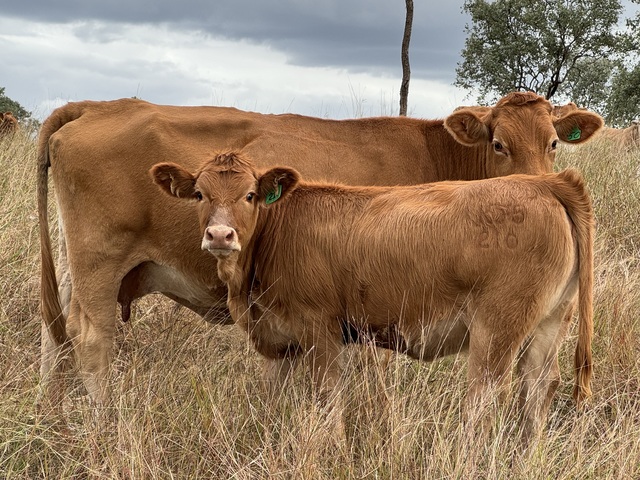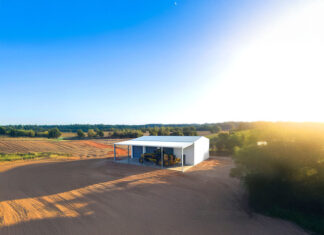Beef2024 was a highlight for Brian and Jasmin Kaddatz and their family of Merrindale Gelbvieh when their Kadfarm Gelbvieh Spartan won the bull category for 30 months and under 36 months, and then went on to win Grand Champion Gelbvieh bull.
“This was a wonderful conclusion to the year and a mark of recognition for a journey that began over 30 years ago when Brian’s parents, Brice and Frances Kaddatz, brought the Gelbvieh breed to the northern tropics and began a crossbreeding program with the Brahman breed,” Jasmin said.
The Kaddatz program has been built with the commercial cattle industry in mind, utilising events like the Gympie Carcass Classic as an educational and information-gathering tool to maximise profitability for their herd. They use this data to select bulls and females, benefiting their end users—the commercial cattle producers.
“This also makes our crossbred cattle well-suited for any climatic condition in Australia,” Jasmin said.
“We have made a conscious decision to use registered animals on both sides of our crossbreeding program to provide the best information to our customers.”
Gelbvieh cattle have been involved in trials around the world, and the information gathered has made them one of the best breeds for use in various crossbreeding programs.
Not only do they add the benefits of their own breed, but they also magnify the strengths of the breed they are crossed with.
So much so, the Balancer (Gelbvieh x Angus) has its own herd book in North America and is rapidly spreading around the world as one of the best production animals for commercial producers.
They complement both British and tropical breeds, making them highly versatile.
The Gelbvieh breed has become one of the most utilised in the USA for composite breeding, ensuring maximised profits.
Gelbvieh cattle are known for their quiet and inquisitive temperament.
They excel in many major traits, contributing excellent maternal qualities, such as high fertility, early puberty, and good milk production.
The breed also combines lower birth weight with explosive, curve-bending growth rates, producing heavy, well-muscled progeny with optimal finishing ability.
“We place a lot of emphasis on our cow families and the maternal capabilities of the breed,” Brian said.
“We believe the value of a bull is largely determined by his mother and the daughters he will sire.”
At Merrindale, the Kaddatz family also focuses on foot and udder quality, as well as structure and phenotype.
The Australian Gelbvieh Breed Society has recently transitioned to the IGS data system, which is used by both the American and Canadian societies.
This system offers the most comprehensive data pool available.
When combined with DNA collection, which is now a key part of the breed’s resources, it provides Australian breeders with critical information for their breeding programs.
“We know our commercial customers value these traits, and we believe it is our responsibility as seedstock producers to go above and beyond in providing the necessary data,” Brian said.
Brian and Jasmin recently attended Agribition in Canada, which has partnered with Beef Australia.
It proved to be a pivotal experience for the Australian Gelbvieh group, as breeders embarked on a journey of exploration, collaboration, and knowledge exchange.
The tour, which began in November 2023, saw the Australian delegation—led by Brian and Jasmin—arrive in Regina for a week of insightful engagements and strategic discussions.
The primary focus of the trip was to forge partnerships with prominent Canadian Gelbvieh breeders and explore opportunities for introducing outcross genetics into Australia.
Brian and Jasmin returned with a wealth of information and a clear vision for the breed and their customers.
Beyond visual assessments, discussions centred around potential collaboration in genetic exchange, including embryos and semen, with a focus on securing Australian rights.
This exchange not only demonstrated a commitment to enhancing genetic diversity in Australia but also highlighted the collaborative spirit that defines the global Gelbvieh community.
The trip provided an invaluable firsthand understanding of the breeding philosophies and operational intricacies of the ranches they visited.
This multifaceted approach underscored the depth of consideration in their efforts to enhance and diversify the Gelbvieh landscape in Australia.
Engaging with fellow breeders, they delved into bloodlines and explored potential export opportunities.
Gelbvieh cattle range in colour from a golden honey shade through to deep, rich red and also black.
This makes them ideal for crossing with most breeds to produce an even, solid colour that gives a uniform appearance in the paddock and saleyards.
“Gelbvieh is a unique breed in the beef industry, not only for the invaluable traits it brings to a commercial breeding program but also for the way it enhances the best traits of any breed it is combined with,” Brian said.









